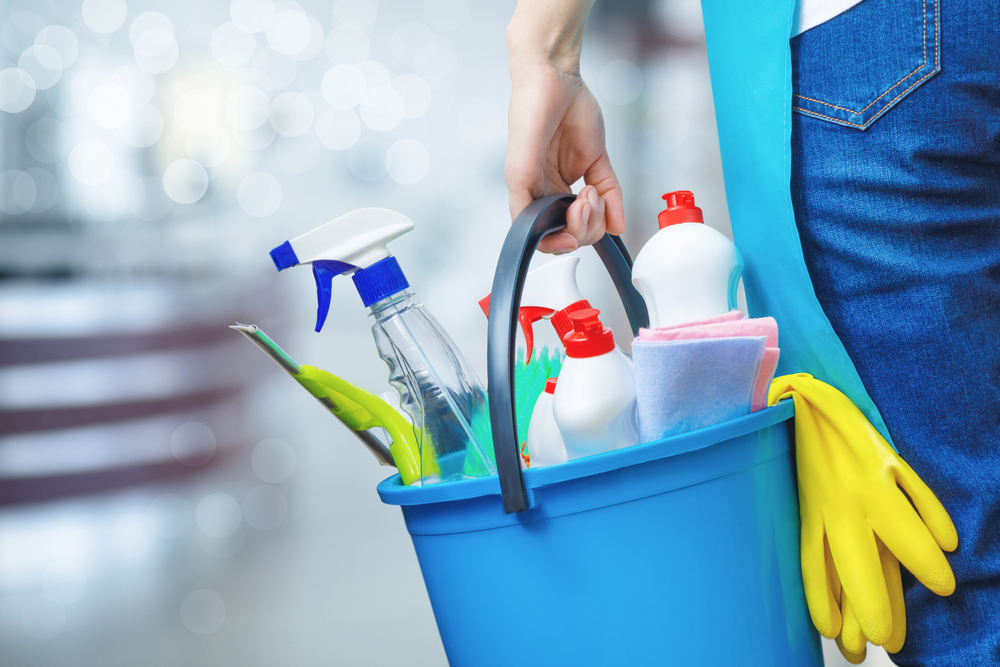As we prepare for the holidays, we’re again in the middle of another season of the most unpleasant gifts: the common cold and, certainly much worse, what some call the “tripledemic” of influenza, respiratory syncytial virus (RSV), and COVID-19.

The “CDC (Centers for Disease Control and Prevention) continues to anticipate that the upcoming fall and winter respiratory disease season will likely result in a similar number of hospitalizations as last season,” according to an October 26, 2023, statement on the CDC website referring to flu, RSV, and COVID-19 hospitalizations in the United States.
Last flu season, it was estimated that 650,000 were hospitalized with the flu. Between October 2022 and April 2023, over 792,000 were hospitalized with COVID-19, and between July 2022 and June 2023, 3,200 were hospitalized with RSV.
Therefore, facilities professionals should ensure their facilities follow proper cleaning procedures to keep their occupants healthy.
Clean and Disinfect Your High-Touch Areas
Special attention should be paid to cleaning and disinfecting high-touch areas in your facility.
Facilities professionals should decide whether to clean, which involves using water and soap or detergent, or disinfect, which involves using chemicals or disinfectants to kill germs on objects.
Generally, cleaning once a day keeps a facility healthy, while disinfecting is necessary when cleaning may not be enough to clean dirty surfaces or remove all germs.
Decisions on cleaning facilities, and portions thereof, should be based on:
- Number of people: High-traffic areas, like lobbies and break rooms, should be disinfected with chemicals to kill germs.
- Number of touch surfaces: More frequent cleaning should be done of all high-touch areas like door handles, light switches, elevator call buttons, and computer keyboards.
- Whether known sick people have visited: Clean and disinfect all areas, and use gloves and masks if cleaning clothing, towels, and linens.
- General vulnerability of occupants: More frequent cleaning should be done in areas with vulnerable populations, including schools and healthcare facilities.
- Types of materials: Consider carpets, rugs, drapes, towels, and linens.
Learn more about the differences between cleaning and sanitizing by reading “Back to Basics: Cleaning, Disinfecting, or Sanitizing? What’s Right for Your Facility?” on Facilities Management Advisor.
Don’t Forget About the Restrooms!
Restrooms are known to be major germ zones. In fact, according to HealthNews, scientists found an average of 500,000 bacteria cells per square inch on various restroom surfaces.
As a result, facilities professionals should specifically focus on renovating their restrooms to feature touchless technology, thus reducing the number of touchpoints.
Facilities professionals should ensure restrooms are cleaned adequately by using a checklist and paying special attention to high-touch areas like stall door locks, toilet seats, faucets, and paper towel dispensers.
While restrooms should be cleaned at least once a day, more extensive cleaning, which should be done once a week, should focus on hard-to-reach and overlooked areas. Schedule more frequent cleanings based on restroom volume.
Before cleaning, put on personal protective equipment (PPE), including gloves and eye protection, especially when cleaning blood spills and bodily fluids.
Here are eight restroom cleaning tips:
- Knock and check for occupants. Temporarily close the restroom by using signage blocking the entrance.
- Use toilet bowl cleaner on the inside of toilet bowls and urinals. Replace urinal cartridges during extensive cleanings.
- Sanitize walls and all stall partitions, including those between urinals.
- Sweep, then mop the floor. Scrub bathroom tiles during extensive cleanings.
- Use an antibacterial disinfectant for toilet seats, sinks, mirrors, and countertops.
- Disinfect door handles and light switches.
- Restock toilet paper, paper towels, and feminine hygiene products, and refill soap dispensers.
- Take out the trash and reline.
Learn More
Adequately cleaning restrooms and common areas will help reduce sickness among occupants.
To learn more about occupants’ perceptions of restrooms, check out “Want Return Customers at Your Business? Make Sure the Restrooms Are Clean.” To learn ways to provide healthier indoor air quality, read “How Facilities Can Improve Their Air Quality.”
